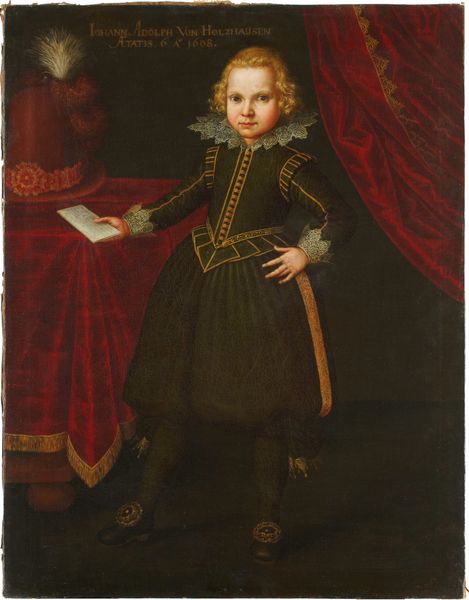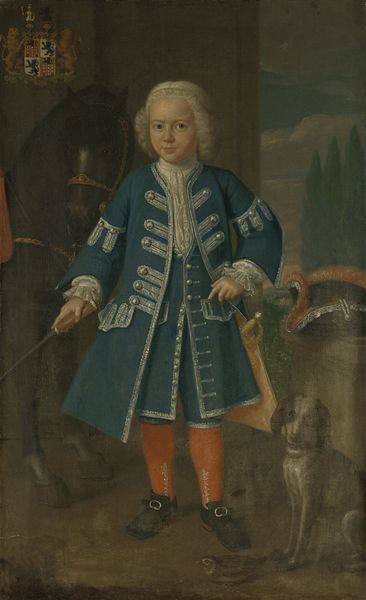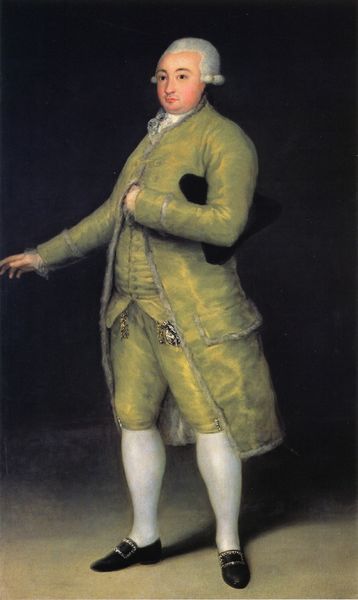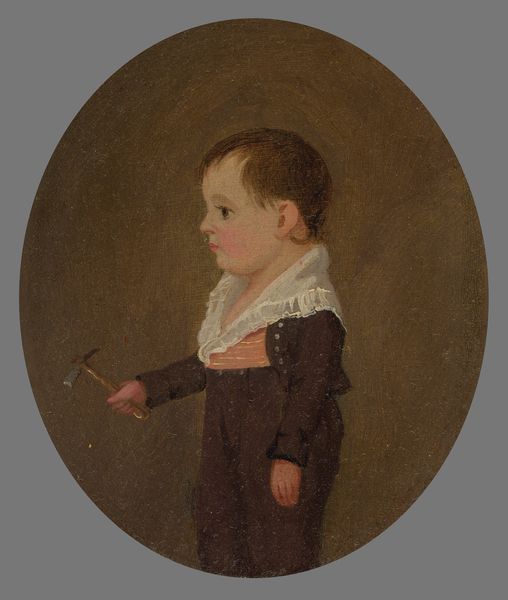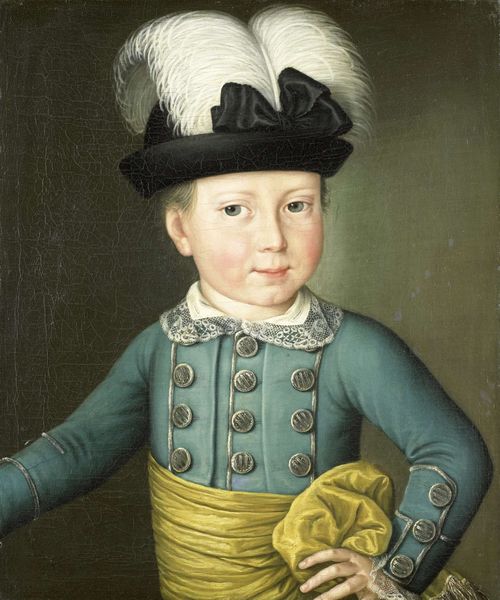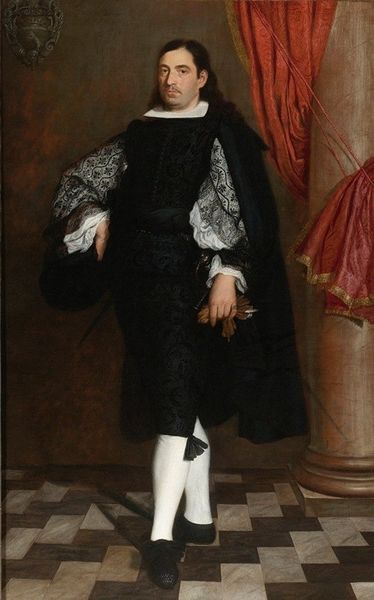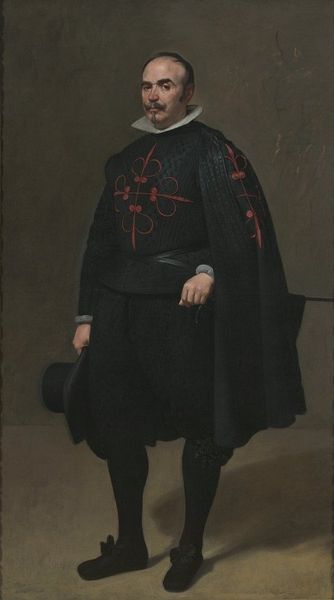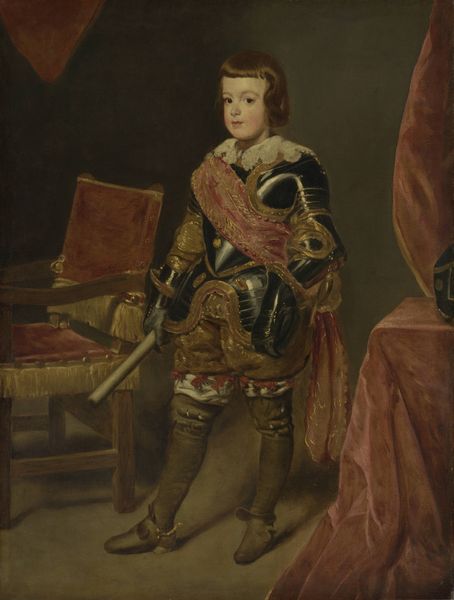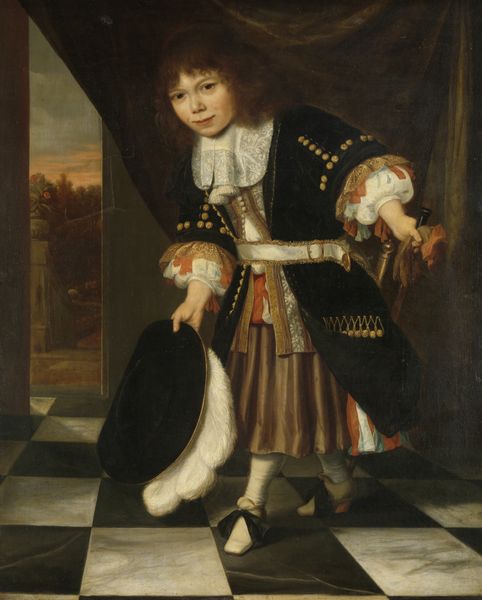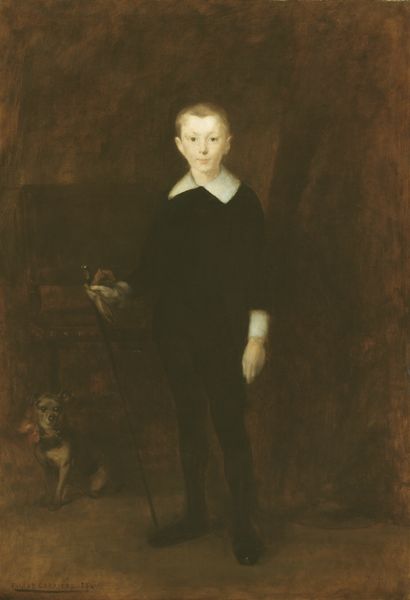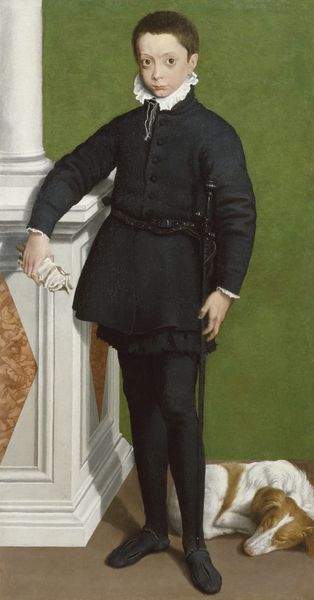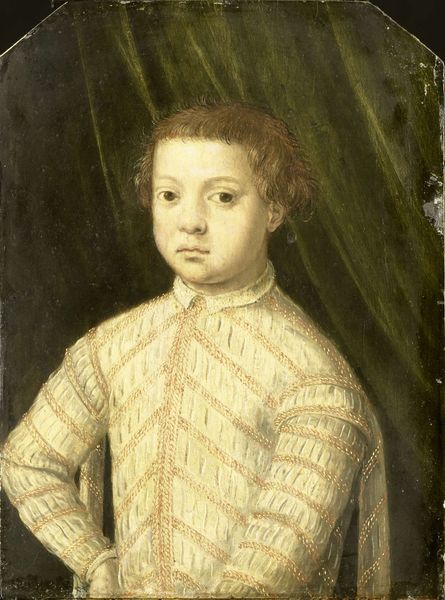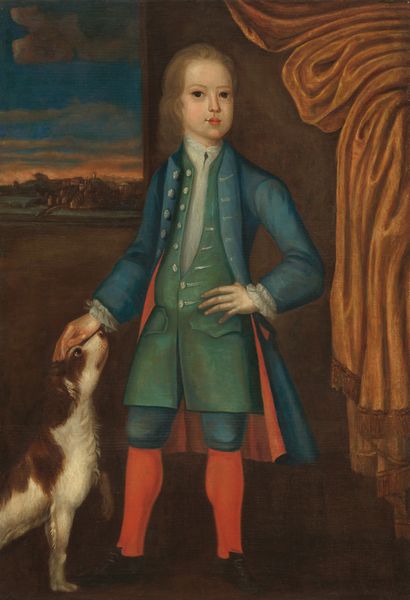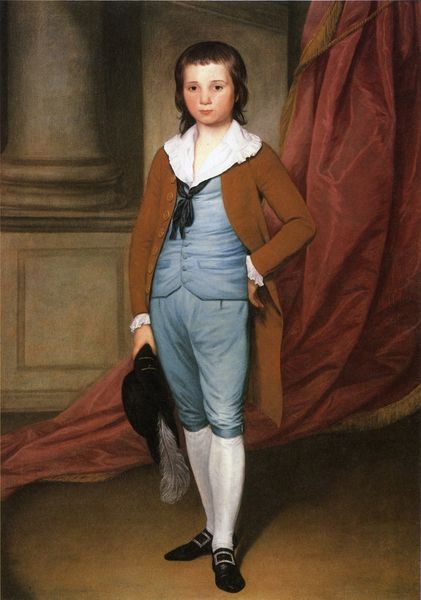
#
character pose
#
character portrait
#
character art
#
cosplay
#
character design for game
#
3d character model
#
historical fashion
#
underpainting
#
costume
#
3d character modeling
Dimensions: height 71.5 cm, width 48 cm, depth 5 cm
Copyright: Rijks Museum: Open Domain
Curator: Standing before us, we have "Paul de Hooghe," painted in 1630. Let's take a moment to consider this remarkable character portrait. Editor: The checkered floor and dark clothing give this portrait a weighty, somber mood, don't you think? There's an undeniable elegance, but something about it feels staged, almost like a costume. Curator: It’s fascinating to consider how status was communicated in portraits during this era. The clothing, the accessories, they weren’t just fabrics, but statements. This painting can teach us volumes about the socio-economic structure in 17th-century portraiture, which would dictate their presentation. Editor: Absolutely. Note the material of his coat—probably expensive wool, judging from its drape—and the fine lace of his collar. It speaks to available skill and consumption patterns of this particular time. The labor and the trading required to generate this piece of art are astonishing. Curator: I agree, and it's worthwhile reflecting on the artistic conventions at play. Notice his posture and the composition’s symmetry; these are strategies designed to promote images of controlled gentility and importance. Consider the context this portrait circulated in – intended to project power within an intricate social environment. Editor: Look closer; what do you see? An elaborate and complex textile adorns the small table. Clearly this is meant to draw the viewer in and express quality craftsmanship; this painting highlights that the consumption of exotic goods represented success. Curator: True. The symbolic display, in relation to trade relations of the period, emphasizes an understanding of colonial expansion and social hierarchy within art production and portraiture conventions. Editor: Considering both the sitter's attire and the carefully depicted setting, one cannot separate the artistry from labor exploitation and commercial influence. These components form and express the totality of what it communicates, as it also embodies value that transcends simple artistry. Curator: Precisely. This portrait reveals that portraiture practices involve more than just artistic choices—it reflects profound social dynamics. It displays much more about the moment in history that produced it than it does the person displayed within it. Editor: A pertinent and persuasive demonstration on a painting and historical moment where material choices define a story far beyond the painted surface.
Comments
No comments
Be the first to comment and join the conversation on the ultimate creative platform.
